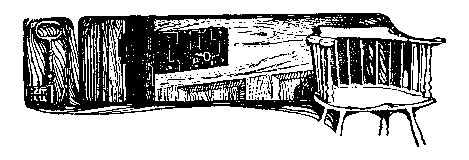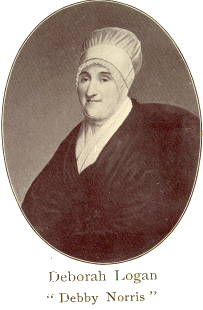
| Page: 1 2 3 4 5 6 7 8 | Previous | Next |
Edited by Albert Cook Myers
Ferris & Leach Publishers
Nos. 29-31 North Seventh Street, Philadelphia

On the 25th day of September, 1777, just two weeks after the Battle of the Brandywine, the British Army entered Germantown. On the same day, and but a few miles distant from the place, Sally Wister, a bright and charming Quaker girl, sixteen years of age, began to "keep a sort of journal" of her observations and experiences.
She was a daughter of Daniel Wister, a prosperous merchant of Philadelphia, and was at this time living with her family in the retired farm house of the widow Hannah Foulke, on the Wissahickon, among the hills of Gwynedd, or North Wales, some fifteen miles away from the storm and stress of those anxious and exciting days in the war-blighted city. Here she stayed until the following July, when, the British having left Philadelphia, she, with the other members of the family, returned to their home in the city. During all this time the Journal was kept up, and occasional entries made, growing frequent and detailed as interesting events crowded one upon another, or brief and infrequent when "a dull round of the same thing over again" made her declare, "I shall hang up my pen until something offers worth relating."

The Journal is addressed by its author to an intimate school friend, Deborah Norris, a descendant of notable colonial ancestry, and destined to become notable herself in after years. Deborah Norris lived with her widowed mother in the Norris mansion adjoining the State House in Philadelphia, and she was fully as intelligent and vivacious as our journalist. The young friends apparently had kept up a frequent correspondence until the British occupation of the city; then communication being practically broken off, Sally's confidences to Deborah took the form of a journal. In the opening lines she says:
"Tho' I have not the least shadow of an opportunity to send a letter, if I do write, I will keep a sort of journal of the time that may expire before I see thee: the perusal of it may some time hence give pleasure in a solitary hour . . ."
Curiously enough, it seems that this interesting chronicle did not reach the eye for which it was intended until long years after the writer's death; then it was loaned by Mr. Charles J. Wister, her brother, to her old friend, who had then become Mrs. George Logan, the elegant and cultured mistress of Stenton. In returning the manuscript to Mr. Wister, Mrs. Logan wrote:
"D. Logan presents her best respects to her ffriend C. J. Wister, and feels herself at a loss for adequate expressions when she would return him thanks for the trouble he has taken to oblige her, but which she gratefully acknowledges.
"D: L: returns the manuscript which he kindly lent her some time ago, and which has, together with the memory of the beloved writer, brought vividly to her mind days long since past; and if, (as she has since thought might have been the case) he meant to have given her her own Letter which he then put into her hands, she would be much obliged to him to destroy it. . . .
Stenton, May 24th, [18]30." [1]
The Journal is undoubtedly one of the most interesting and valuable that has come down to us. Its faithful and clever descriptions of persons and events, its quaint moralizings, its naive confessions of likes and dislikes, its roguishness and genial good humor, and withal its dramatic spirit make it an extremely interesting human document. It conveys a pleasing impression of the life of a young girl and lends a vividness and a reality to the characters and incidents of the time that more formal records fail to supply. It thus assumes a positive value as a historical picture of social conditions in the midst of some of the most important scenes of the Revolutionary struggle.
In the nine months which the Journal covers occurred the British capture of Philadelphia, the Battle of Germantown, the surrender of Burgoyne, the skirmishes before Washington's intrenchments at Whitemarsh, the winter encampment at Valley Forge, the Conway Cabal against Washington, the acknowledgment of American Independence by France, and the Mischianza and the other gaieties of the British in Philadelphia. "But a little distance away from the hills of Gwynedd," says Mr. Howard M. Jenkins, the historian of Gwynedd, "the greatest actors in the Revolutionary drama were playing their parts, -- Washington, Greene, Lafayette, Wayne, Steuben, Kalb, and all the distinguished list."
To the Foulke mansion come General Smallwood, commander of the Maryland troops, Colonel Wood, of Virginia, Major Ogden, of New Jersey -- three future governors of their respective States -- and many other important figures of this crucial period in the Nation's history. Generals, colonels, majors, captains, resplendent in red and buff and blue, and glittering in sashes, swords and epaulets, pass and repass before the unaccustomed and dazzled eyes of the Quaker maiden, and are quaintly portrayed in her pages.
Next page